
Cowes Week, the oldest and largest sailing regatta in the world, has a rich history spanning over two centuries. Here are some notable moments and milestones in the history of Cowes Week:
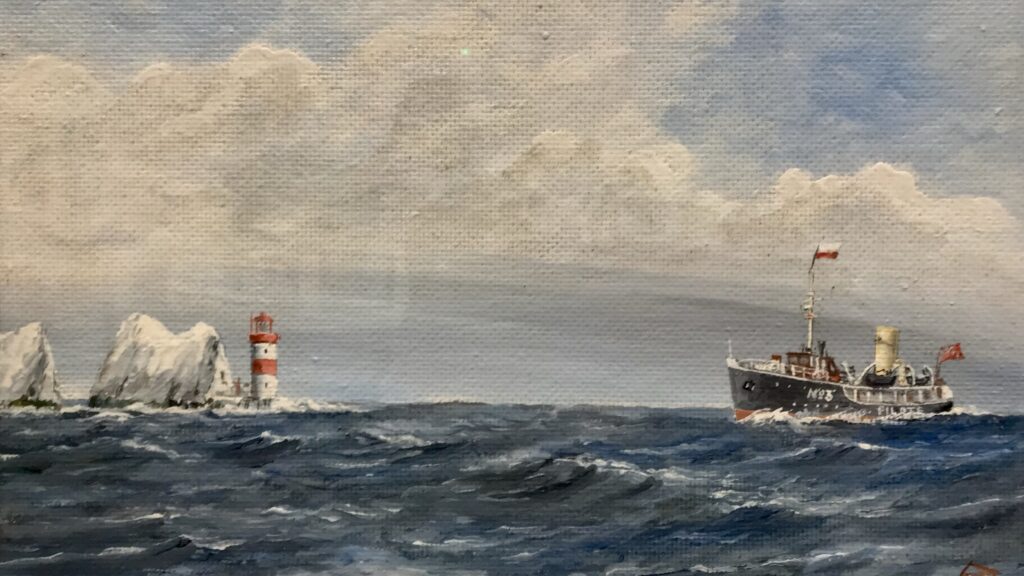
- Origins of the regatta: Cowes Week can be traced back to the early 19th century, when it was known as Cowes Regatta4. The regatta was based around the local Pilot Cutters receiving their first-class pilots for the season4.
- Growth in participation: Cowes Week has grown significantly in terms of participation. It now attracts over 1,000 boats and 8,500 competitors, ranging from Olympic and world-class professionals to weekend sailors16.
- Increase in races: The regatta now features 40 daily sailing races, offering a wide range of classes and categories, including handicap, one-design, and multihull classes2.
- Duration and scheduling: Cowes Week is held annually in August, typically starting on the first Saturday after the last Tuesday in July and running for eight days1. However, it can be occasionally moved to another week if the tides are unfavorable1.
- Popularity and social significance: Cowes Week has become a significant event in the social calendar, attracting not only sailors but also a wider audience. It has traditionally attracted the rich and famous, including members of the British royal family36.
- International recognition: Cowes Week has gained international recognition and is considered one of the world’s best sailing spectacles36. It continues to draw participants and spectators from around the globe.

1788 – Sea bathing became popular at West Cowes and early sailing matches took place.

1794 – Report that the harbour was full of ships and that horses were being landed for Hessian troops stationed on the Island.
1803 – Shipbuilder, Thomas White (1773-18) bought Nye’s Yard at East Cowes.
1814 – First mention of an ‘Isle of Wight Annual Regatta’
1815 – The Yacht Club founded at Thatched House Tavern in London.
Meetings held at the Medina House Hotel, East Cowes.
1820 – The Yacht Club becomes the Royal Yacht Club under the patronage of George IV.
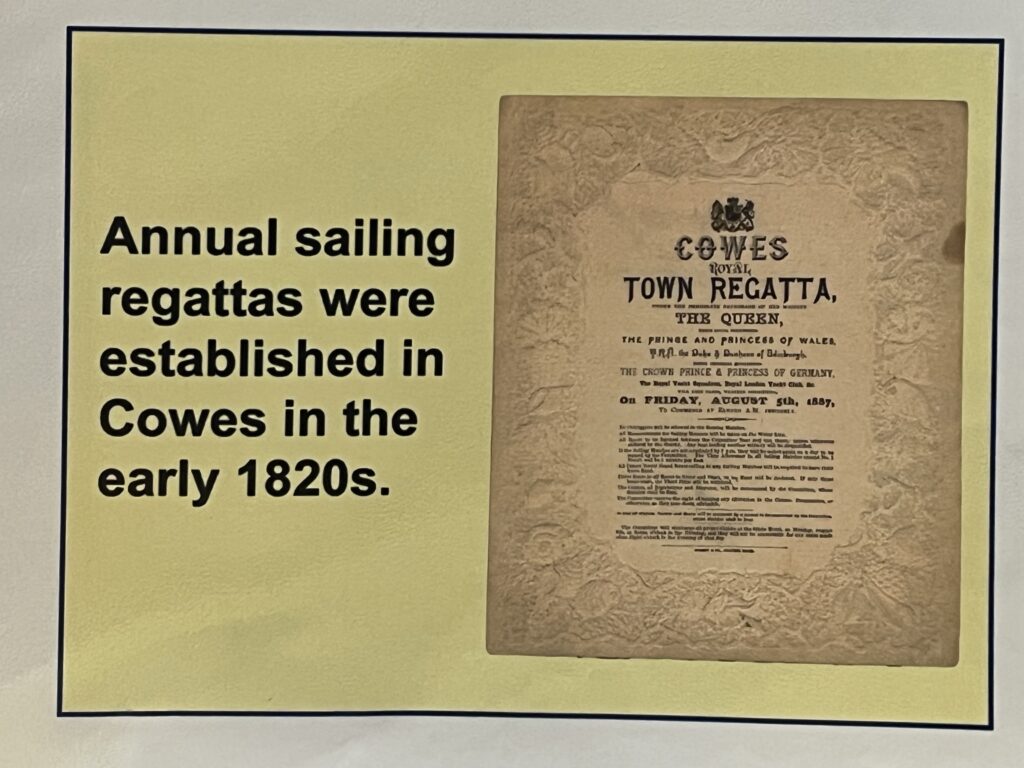
1826 – At 9.30am on the 10th August the first Cowes Week race officially started.
1833 – The Royal Yacht Club becomes the Royal Yacht Squadron by permission of William IV
1857 – The Royal Yacht Squadron moves into West Cowes Castle.

1870 – First torpedo boats built by J. Samuel White.
1901 – Death of Queen Victoria at Osborne House, East 1902 – S E Saunders moved his boatbuilding business, from Goring-on-Thames to West Cows, before moving to East Cows 1906.
1903 – Osborne Naval College opened in the grounds of Osborne House. It closed in 1921.
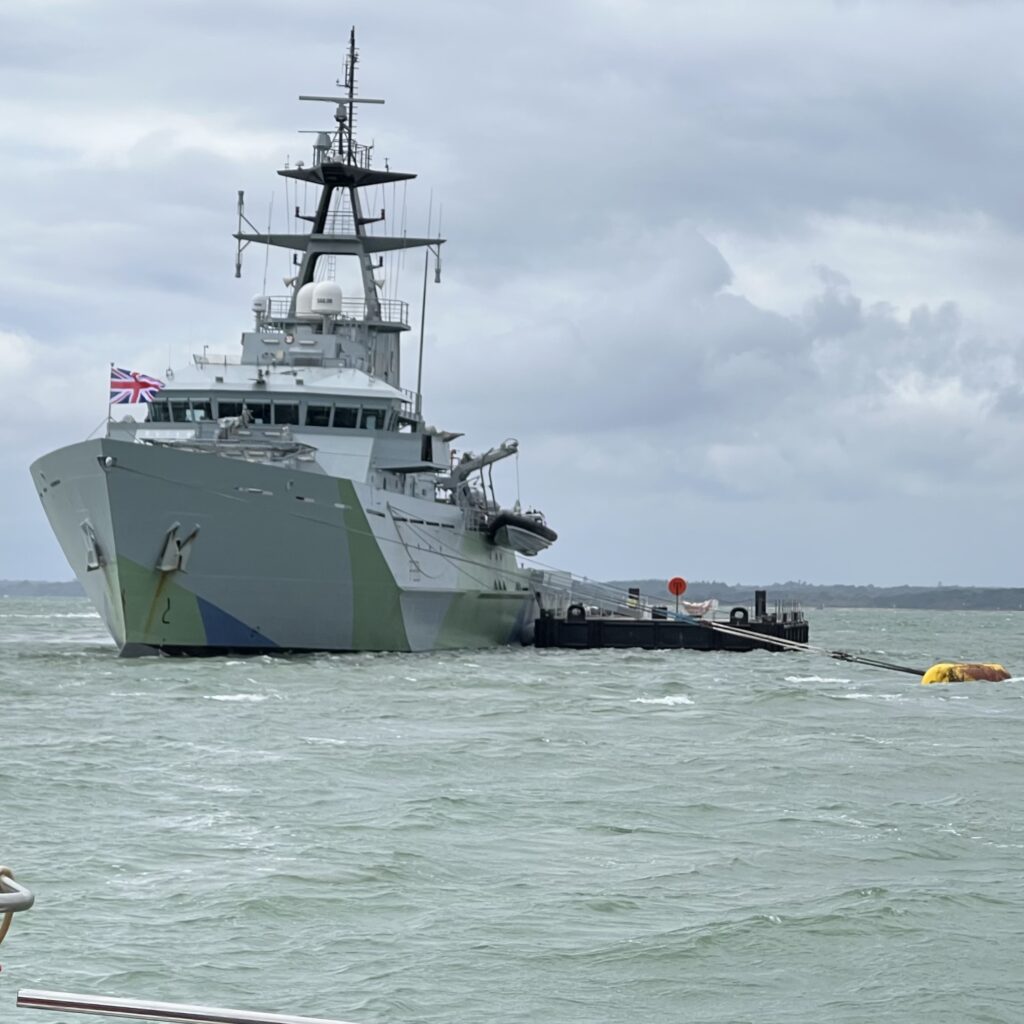
1909 – S E Saunders moved into the fledgling aecal industry.
1928 – Uff Fox’s National 14 dinghy, Avenger, made 57 race starts and won 52, including Prince of Wales Cup.

1929 – S E Sautd became Saunders-Roe Ltd.
1936 – The yacht Britannia is scuttled off St Catherin lowing the death of King George V.
1937 – Saunders-Roe built Bluebird in which Sir Malcolm Campbell set several world water speed records.
1942 – 4th/5th May. Night bombing by Germans during WWII. The guns of the Polish destroyer, Blyskawica, (built by J. Samuel White) help to save both towns.
1959 – First hovercraft built by Saunders-Roe Ltd.

1977 – A giant Union Jack is painted on the door of the Columbine shed to celebrate the Silver Jubilee of Queen Elizabeth II.

1981 – White’s former yard finally closed.
2001 – The America’s Cup Jubilee.
Overall, Cowes Week has evolved from a small regatta in 1826 to a world-renowned event that attracts sailors and spectators from around the globe. Its rich history and tradition make it an iconic fixture in the sailing calendar.
How are Queen Elizabeth II and Prince Philip connected to Cowes Week and Fast Net and the Isle of Wight?
Queen Elizabeth II and Prince Philip have been connected to Cowes Week, Fast Net, and the Isle of Wight in various ways. Here are some examples:
- Visits to the Isle of Wight: Queen Elizabeth II has made a number of visits to the Isle of Wight, sometimes accompanied by her husband, Prince Philip14.
- Sailing at Cowes: Prince Philip was a keen sailor and was often seen sailing at Cowes on the Isle of Wight2.
- The Royal Yacht: The Royal Yacht, which was used by the royal family for official visits and holidays, was a regular sight at Cowes Week in early August3.
- Patronage of Cowes Week: Princess Anne, the daughter of Queen Elizabeth II and Prince Philip, is a Royal Honorary Member of the Royal Yacht Squadron and has attended Cowes Week in the past5.
- Historical connection: In 1909, Kaiser Wilhelm and King Edward VII had a famous clash during Cowes Week, which became a royal faux pas at the event6.
These connections demonstrate the long-standing relationship between the British royal family and Cowes Week, Fast Net, and the Isle of Wight.

What does Princess Royal mean? Does Princess Ann sail? Does Princess Ann ride horses competitively? Who is Neptune?

Princess Royal is a title customarily awarded by a British monarch to his or her eldest daughter, and it is the highest honor that may be given to a female member of the royal family24. Princess Anne, the second child and only daughter of Queen Elizabeth II and Prince Philip, became Princess Royal in 198724.

According to an astrological article1, Princess Anne has a positive Venus/Neptune aspect, which could indicate a strong sense of compassion and empathy. Princess Anne is also an accomplished equestrian and has won numerous medals in the sport36.She began horseback riding at the age of 11 and was named the BBC Sports Personality of the Year in 19713. Princess Anne has also served as president of the Fédération Equestre Internationale (FEI) from 1986 to 19943.
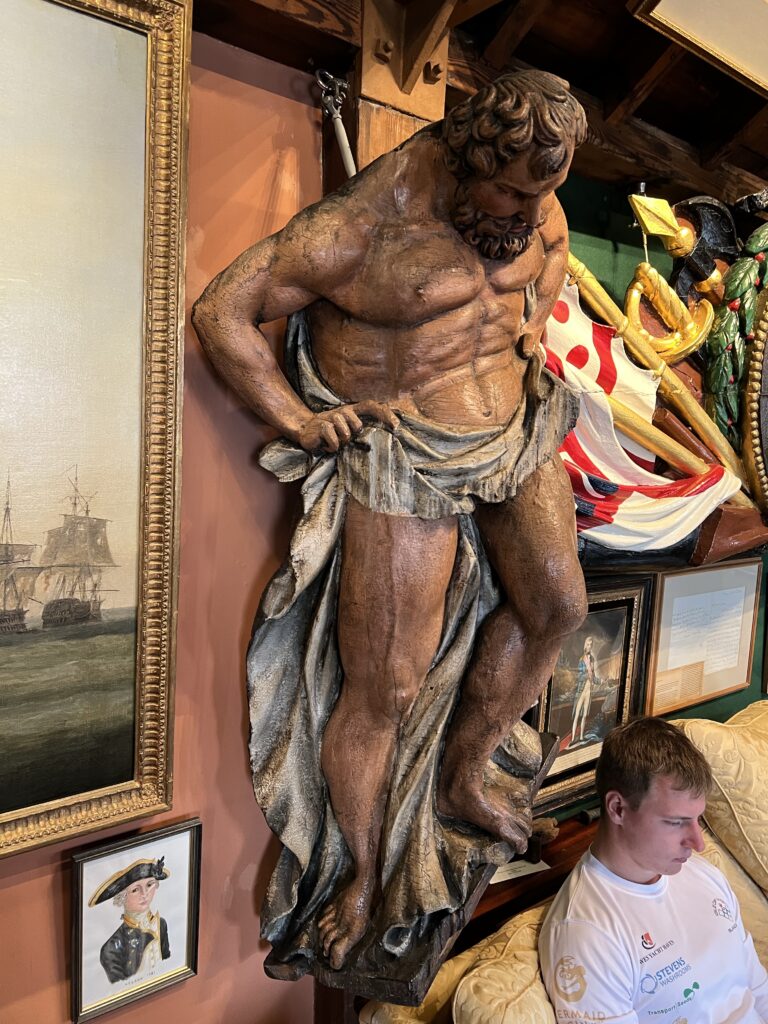
Neptune is the Roman god of the sea and freshwater1245. He is the Roman equivalent of the Greek god Poseidon2. Neptune was originally associated with fresh water but became connected with the sea and was worshipped as the god of the sea12. In addition to his association with the sea, Neptune was also worshipped as the creator of horses and was considered the patron of horse racing1236. The information provided is based on the mythology and beliefs surrounding Neptune in Roman culture.

Why is princess Ann so important to the sport of sailing? How has she challenged some of the myths involving sailing and boating?
Princess Anne, also known as the Princess Royal, is an accomplished equestrian and has won numerous medals in the sport36. She has also been a keen sailor since 1979, when she became a patron of the Royal Yacht Squadron2.
Princess Anne has been involved in the sport of sailing in various ways, including as a spectator, a patron, and a participant. She has attended Cowes Week, the largest sailing regatta in the world, and has been a Royal Honorary Member of the Royal Yacht Squadron25. Princess Anne has also been involved in youth training and has visited various yacht clubs to watch young sailors hit the waves2.

In addition to her passion for sailing, Princess Anne has challenged some of the myths surrounding sailing and boating. For example, in 2017, she revealed that she was saved from a boating disaster by a cheap car fan belt, debunking the myth that expensive equipment is necessary for safe boating1. Princess Anne’s enthusiasm for sailing and boating has helped to promote the sport and inspire a new generation of sailors4.

WARRIOR WON USA60564 Chris Sheehan races a PAC 52 from
Larchmont Yacht Club and finished 3rd overall in the Fastnet 2023 IRC class (358 boats in class)
Princess Anne has challenged some of the common misconceptions about sailing and boating. Here are some examples:
- Expensive equipment is necessary for safe boating: In 2017, Princess Anne revealed that she was saved from a boating disaster by a cheap car fan belt, debunking the myth that expensive equipment is necessary for safe boating1.
- Sailing is only for the wealthy: Princess Anne’s passion for sailing and boating has helped to promote the sport and inspire a new generation of sailors2. She has visited various yacht clubs to watch young sailors hit the waves and has been involved in youth training2.
- Sailing is not a sport for women: Princess Anne is an accomplished equestrian and sailor, challenging the misconception that sailing is not a sport for women3. She has won numerous medals in both sports and has been a patron of the Royal Yacht Squadron since 197923.
- Sailing is not accessible to everyone: Princess Anne’s involvement in youth training and her visits to various yacht clubs have helped to promote sailing as an accessible sport for everyone2. She has also been involved in promoting sailing as a sport for people with disabilities4.
Overall, Princess Anne’s involvement in sailing and boating has helped to challenge some of the common misconceptions about the sport and promote it as an accessible and inclusive activity for everyone.
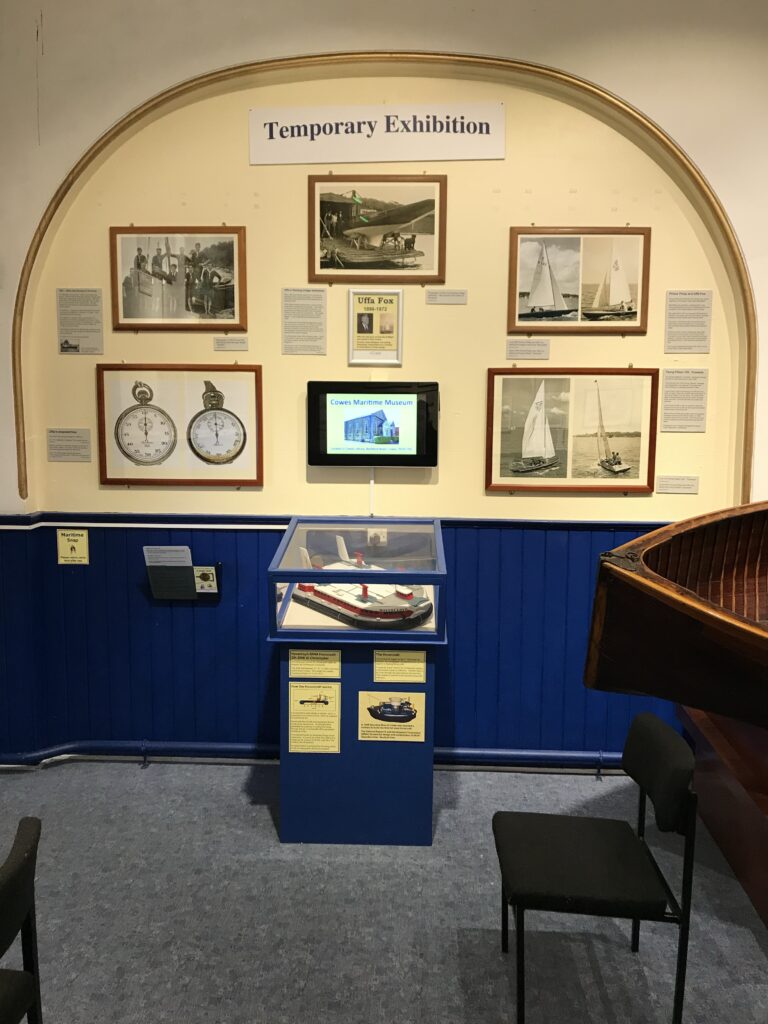
According to the Cowes Maritime Museum, On August 22, 1851 Queen Victoria and her party were off Cowes on board the Royal Yacht ‘ Victoria and Albert’. They were waiting to see who would win the international yacht regatta race around the Isle of Wight.
At 5.45pm the Prince of Wales (the future King Edward VIl) went ashore. Staying onboard Queen Victoria was immensely interested and probably assumed that at least one of the fourteen British cutters and schooners that had started at 10.00am that morning would defeat the American invader, ‘America’.
The smaller steam yacht ‘Fairy was dispatched seaward of the Needles to discover who was leading the race. Fairy’s return gave rise to questions and answers that have become famous. The Queen is alleged to have asked a signalmaster, “Are the yachts in sight?’
“Only the America, may it please Your Majesty.”
“Which is second?”
“Ah, Your Majesty, there is no second.”
“Ah, Your Majesty, there is no second.”
America finished off Cowes some three hours later at 8:37pm. The next yacht, the cutter Aurora, was clocked at 8:45pm. The difference of only eight minutes in an all-day race is so small that it makes the historic conversation seem not only improbable but an American fabrication
Yet the facts were that the wind, which had been fresh from St. Catherine’s to the Needles, died to a whisper after the America entered the Solent and that the Aurora, little more than a quarter of the America’s tonnage, picked up several miles of disadvantage and became a very good second
Is it bad luck to talk about horses when sailing or eat banana bread or take a woman sailing? Where or how did these luck myths originate?
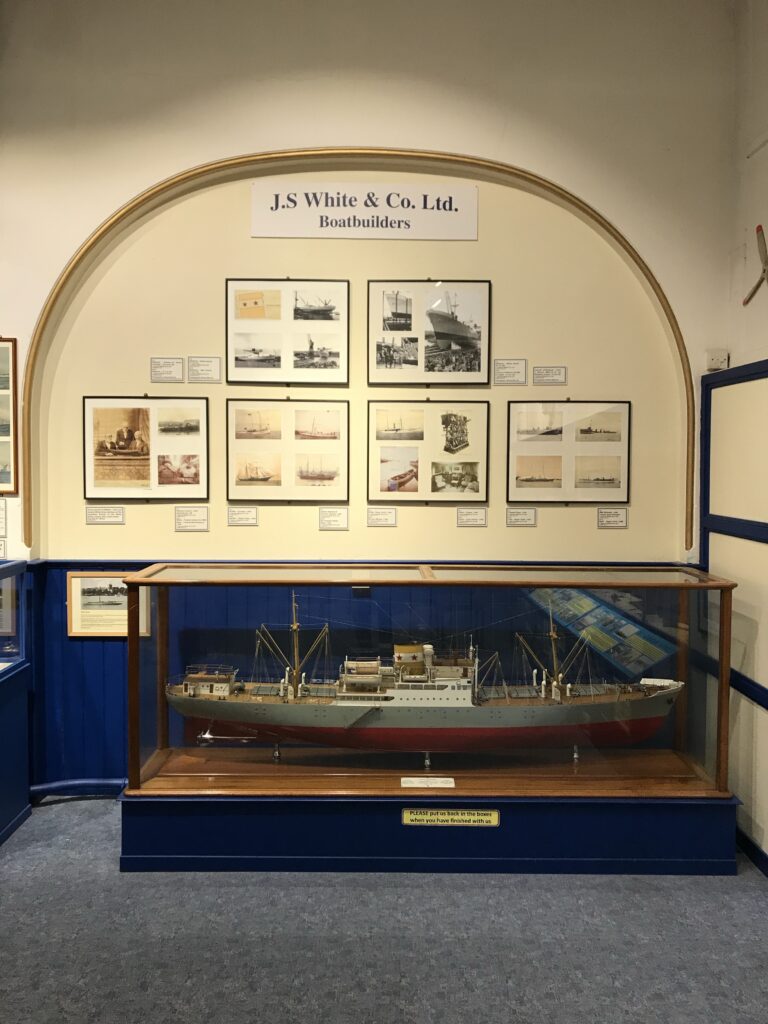
Sailors and mariners have long held superstitions and beliefs about luck and safety on the sea. Here are some of the most popular myths and superstitions related to sailing:
- Bananas: According to Sunsail1, bananas are considered bad luck on a boat. The origin of this superstition is unclear, but some believe it dates back to the days of sailing ships when bananas would ripen quickly and attract insects, which could spread disease and cause other problems.
- Women on board: According to The Log4, there is a superstition that women on merchant and military vessels were destined to bring bad luck to the voyage. However, this belief is not supported by any scientific evidence.
- Talking about horses: There is a superstition that talking about horses while on a boat is bad luck, according to Sunsail1. The origin of this belief is unclear.
- Saying “goodbye”: Sailors have traditionally avoided saying “goodbye” or “good luck” before setting sail, according to Formula Boats6. This is because these phrases were believed to bring bad luck.
- Re-naming a boat: It is considered bad luck to change the name of a boat without first having a de-naming ceremony and officially christening the boat again, according to the New Zealand Maritime Museum5.
- No whistling: According to Sail Magazine, whistling on a boat is considered bad luck. The origin of this superstition is unclear, but some believe it dates back to the days of sailing ships when whistling was used to signal orders to the crew.
- No leaving port on a Sunday: According to Discover Boating6, it is considered bad luck to leave port on a Sunday. This superstition may have originated from the religious belief that Sunday is a day of rest.
- No cutting your hair: According to Sail Magazine, cutting your hair on a boat is considered bad luck. The origin of this superstition is unclear, but some believe it dates back to the days of sailing ships when hair was used to make rope.
- No whistling upwind: According to Sail Magazine, whistling upwind is considered bad luck. The origin of this superstition is unclear, but some believe it dates back to the days of sailing ships when whistling upwind was thought to bring bad weather.

What are some sailor superstitions related to good luck
Sailors have long held superstitions and beliefs about luck and safety on the sea. Here are some sailor superstitions related to good luck:
- Dolphins: According to BoaterExam1, dolphins swimming with the ship are seen as a good sign.
- Cats: According to Discover Boating3, cats are considered good omens on board because they hunt rats. Rats were attracted to the food cargo on trading ships of old and often carried disease.
- Lucky animals: According to History is Now Magazine5, sailors have believed in having tattoos of lucky animals such as pigs or roosters to bring good luck.
- Coins: According to Marine Insight6, it is considered good luck to throw coins into the sea before setting sail.
- Red sky: According to BoaterExam1, a red sky at night is considered a sailor’s delight, while a red sky in the morning is a sailor’s warning.

These superstitions may seem strange to us today, but they were once taken very seriously by sailors and mariners. The origins of many of these superstitions are based on the inherent risks of sailing, and luck, either good or bad, as well as portents and omens that would be given associative meaning in relation to the life of a mariner, sailor, fisherman, or a crew in general4. If you are visiting Cowes, knowing about the superstitions will be helpful. Sailors in Cowes appeared thankful when we offered them “Fair Winds” or “Fair winds and Following Seas”.


The Cape 31 class is a Mark Mills design, originally conceived and built in Cape Town. Hence the name! This superlightweight downwind flyer has a massive spinnaker and will easily reach speeds in the high teens.


The SB20 is one of the most popular modern keelboats with several hundred racing around the world. Sailed by 3 or 4 crew, it offers high- performance asymmetric sailing within strict one- design rules. Entries (9)

The J/70 class is the first sportsboat from J Boats for nearly 20 years. The J/70’s 7 metre long waterline coupled with her high aspect, carbon mast and boom provides exhilerating performance downwind, with the kind of stability upwind that one would enjoy in a larger boat. Entries (30)


XOD: These all-wooden, one-design classics celebrated their Centenary in 2011, having raced in the Solent area since 1911. Designed for the Solent “chop”, they are safe, seaworthy and fun to sail. The class is consistently one of the largest to race at the regatta. Entries (41)


The Victory class was set up in 1934 by the Portsmouth Harbour Racing and Sailing Association as a one- design fleet. The Victory can be identified by its clinker-design black hull with a Bermudian rig and generous spinnaker. Entries (11)


The Seaview Mermaids are owned by Sea View Yacht Club and can be chartered by members – and, outside Cowes Week, by organisations wishing to hold their own dayboat regattas. Although the hulls are all the same, the fleet has a choice of sails of different sizes depending on the wind strength each day. Entries (14)


The Squib is a 19ft keelboat crewed by two people and has distinctive dark orange sails. Over 800 Squibs have been built since they were first designed in 1967, and 500 regularly race in fleets around the UK and Ireland. The Squib is inexpensive and light enough to be trailed behind a small car. Entries (8)


These wooden, classic one-design boats have been racing at Cowes since they were first built in 1923. New boats are still built to the original specification, but with a modern rig. All Sunbeams have names ending in “Y”. Entries (20)


The Sonar has been the Paralympic keelboat since 1996. The 23ft international one-design has a contoured, sit-in cockpit and recessed handholds, so when the wind gets up, you can sit securely on the side decks. A large sail area makes the Sonar an easy- to-handle performer in light winds. Entries (18)


This is an affordable, powerful day racing keelboat. It has great upwind performance combined with planing ability downwind with a practical deck layout which makes it a dream to sail. The Etchells moves easily in a light breeze but will still be out there racing in winds of over 25 knots. Entries (12)

The Fleet of Sunsail 41.0 charter boats enables those who do not own a boat to race. The boats are fun, exciting and can be sailed bareboat or with Sunsail skippers. They are perfect for hospitality or private charter for family and friends and it’s the only charter fleet to have its own class at the regatta. Entries (11)

REFLECTION GBR9327T Patrick & Jilly Blake a Beneteau First 31.7 racing in Class 5 IRC

BULLDOG GBR942R racing in Class 1 IRC Derek Shakespeare (15 boats)
JUNO GBR9821T Michael Carrington in a J/109 racing Class 3 IRC (14 boats) REFLECTION GBR9327T Patrick & Jilly Blake racing a Beneteau First 31.7 in Class 5 IRC (16 boats)


Contessa 32s have been racing at Cowes for over 30 years. Still built in Lymington by Jeremy Rogers they are beautiful, seaworthy cruiser/racers. Many early boats have been lovingly upgraded by their owners and all race on level terms with intense and competitive racing. Entries (18)

The International Flying Fifteen was designed in Cowes in 1947 by Uffa Fox and brought a revolution in small, fast, planing keelboats. Since then, its timeless, sleek lines have endeared sailors to create over 60 competitive fleets around the world. Entries (10)

The Dragon is a truly international fleet which takes part in a series of regattas around Europe and further afield. They are highly technical, and although the design is over 75 years old, modern fibreglass Dragons will be racing against their equally competitive wooden counterparts. Entries (11)

The distinctively elegant Daring is unique to Cowes. An open day-racing keelboat with classic lines, typically sailed by a crew of three. Most of the fleet are owned by syndicates of three or four people who share both the cost and the fun of racing one of these lovely boats. Entries (15)

The HP30 class brings together a number of different designs, all of about 30 feet in length and at the lighter end of the displacement range. Big spinnakers, highly competitive crews and fast racing make this one of the leading performance classes in the modern era. Entries (6)

The Redwings have raced at Bembridge since 1897 and have competed at Cowes since 1920. The original Charles E Nicholson design was updated in 1937 with a new Nicholson design. Class rules allow rig development but recently most have standardised on tall narrow rigs with tiny jibs. Entries (20)


Cowes Week fleets race in the Solent, a stretch of water between the Isle of Wight and the mainland of England. The Solent is known for its challenging tidal currents and variable wind conditions, providing an exciting and competitive racing environment15.
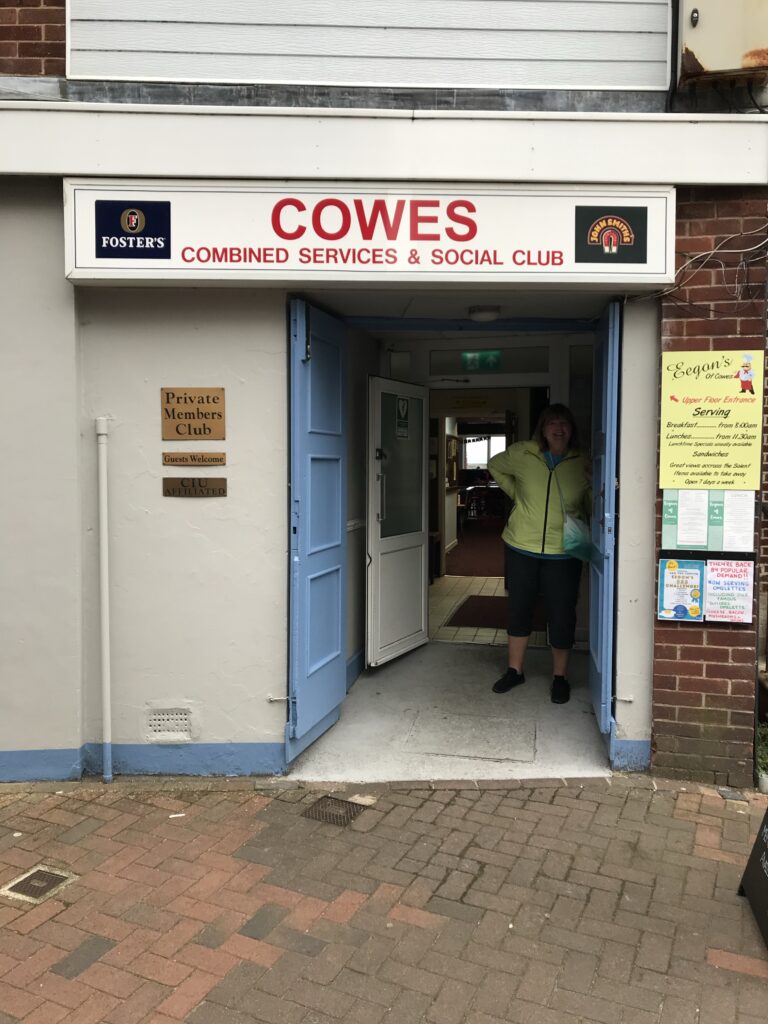
It was not until 1964 that, on the suggestion of HRH Prince Philip (a regular competitor and Admiral of the Royal Yacht Squadron), Cowes Combined Clubs was formed to run and organise the regatta. This body represented the seven clubs involved in managing the racing (Royal Yacht Squadron, Royal London Yacht Club, Royal Thames Yacht Club, Royal Southampton Yacht Club, Royal Southern Yacht Club, Island Sailing Club and Royal Ocean Racing Club) and Cowes Town Regatta Committee. The Royal Yacht Squadron line became the universal start line and there was one set of sailing instructions and racing marks for the week.
Cowes Week History

The fleets race as far as the Needles, which are a series of chalk stacks located at the western end of the Isle of Wight5.

Trinity House took over the examining and licensing of the Solent pilots in 1808, and moved into East Cowes premises in 1842.
The Needles lighthouse was built and is controlled by Trinity House.
Several marinas in the Solent are involved in Cowes Week, providing berthing and facilities for the participating boats. Some of the marinas in the Solent region include:

- Cowes Yacht Haven: Located in Cowes, this marina is a central hub for Cowes Week and offers berthing for a large number of boats. It is situated within walking distance of the town and the racing areas1.
- Shepards Wharf Marina: Also located in Cowes, Shepards Wharf Marina provides berthing and facilities for boats participating in Cowes Week. It is situated close to the town and offers a range of services for sailors1.
- Royal Yacht Squadron: The Royal Yacht Squadron, located in Cowes, is one of the organizing clubs of Cowes Week. While it is primarily a members-only club, it plays a significant role in the regatta3.

These marinas are in close proximity to Cowes, with Cowes Yacht Haven and Shepards Wharf Marina being within walking distance of the town.

The exact distances tmay vary depending on the specific location within the marina.

Please note that the provided information is based on the available search results, and there may be additional marinas or specific details about Cowes Week that are not mentioned here.
Is Yarmouth involved in Cowes Week racing?

Yarmouth is involved in Cowes Week racing. Yarmouth is a town located on the west coast of the Isle of Wight, and it has a long history of involvement in sailing and boating.

The course for the first Cowes Week race in 1826 was to be west round a vessel off Yarmouth1. The Yarmouth XOD Division participates in Cowes Week, which is the largest sailing regatta in the world2.

Yarmouth Harbour also hosts events during Cowes Week, including the Yarmouth Gaffers Regatta3. In addition, the Hamble Estate Agency JOG Cowes to Yarmouth race is a popular sailing event that takes place during Cowes Week4. The Old Gaffers Association also participates in Cowes Week, with events such as the Cowes Spring Classics and the Yarmouth Gaffers Regatta5.

Artist – Captain Bertie Pearson
Overall, Yarmouth is an important location for sailing and boating in the Solent area, and it has a significant role in Cowes Week racing.
What is the calf week in Ireland? Does it also round the Fastnet rock? Why is Calf Week noteworthy?
Calf Week is a sailing regatta that takes place in West Cork, Ireland. It is a notable event in the Irish sailing calendar and is regarded as a hidden gem of Irish sailing2. While the search results do not provide extensive information about Calf Week, it is mentioned that one of the races during the event is round the Fastnet Rock1. The Fastnet Rock is an iconic landmark located off the coast of West Cork and is known for its association with sailing and offshore races, such as the Fastnet Race16.Calf Week is noteworthy for several reasons:
- Sailing Enchantment of West Cork: Calf Week celebrates the sailing enchantment of West Cork, showcasing the beauty of the region and its connection to the sea1.
- Race to the Fastnet Rock: One of the races during Calf Week involves rounding the Fastnet Rock, which is a challenging and iconic course for sailors1.
- Hidden Gem of Irish Sailing: Calf Week is considered a hidden gem of Irish sailing, attracting sailors and enthusiasts to the picturesque waters of West Cork2.
It is evident that the event holds significance in celebrating the sport of sailing in the enchanting waters of West Cork, with the notable inclusion of a race around the Fastnet Rock.
Besides its age and ICOYC membership, what is noteworthy regarding the Royal Cork Yacht Club? Where are its facilities and what one design sailboats does it use it its youth programs? Have any boats from the Royal Cork Yacht Club won the Fastnet Race? How about wins at Cowes Week? Describe the Calf Week Race that involves the Fastnet Rock?
- The Royal Cork Yacht Club is the oldest yacht club in the world that has been in continuous operation since its establishment in 17201.
- The Royal Cork Yacht Club is a member of the International Council of Yacht Clubs (ICOYC)5.
- The Royal Cork Yacht Club is located in Crosshaven, County Cork, Ireland, and has a range of facilities for sailors, including a marina, boatyard, and clubhouse1.
- The Royal Cork Yacht Club has a youth sailing program that uses Optimist and Laser sailboats1.
- Boats from the Royal Cork Yacht Club have won the Fastnet Race, including the yacht “Cork Harbour” in 19271.
- The Royal Cork Yacht Club has also had wins at Cowes Week, including the Cork Harbour One Design class in 19321.
- The Calf Week Race that involves the Fastnet Rock is a notable event in the Irish sailing calendar. The race takes sailors from Crosshaven to the Fastnet Rock and back, covering a distance of approximately 130 nautical miles3. The race is known for its challenging conditions and is considered a test of skill and endurance for sailors3.
Overall, the Royal Cork Yacht Club is a notable institution in the sailing community, with a long history of involvement in the sport and a range of facilities and programs for sailors. The club has had significant successes in offshore races such as the Fastnet Race and has been a member of the ICOYC since its establishment. The Calf Week Race that involves the Fastnet Rock is a challenging and notable event in the Irish sailing calendar. For sailors who have rounding the Fastnet Rock on their bucket list, it is worth checking out especially if they have already participated in Cowes Week.



One thought on “Cowes Week”